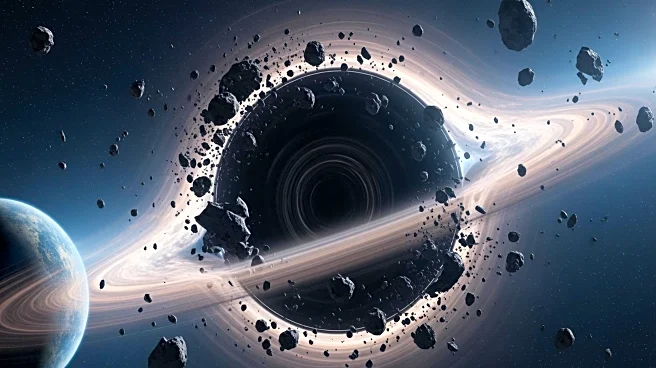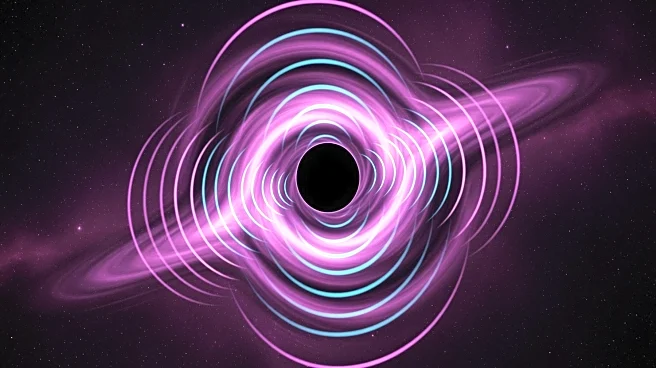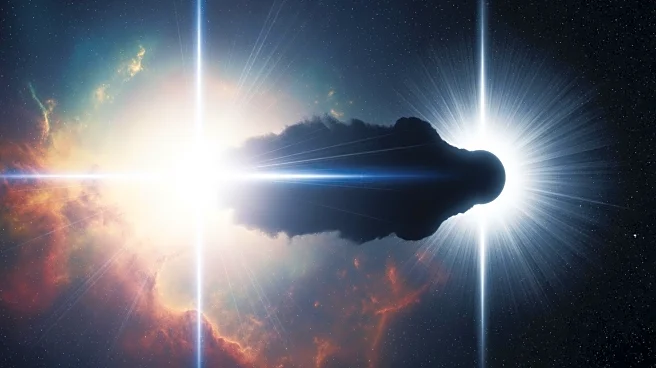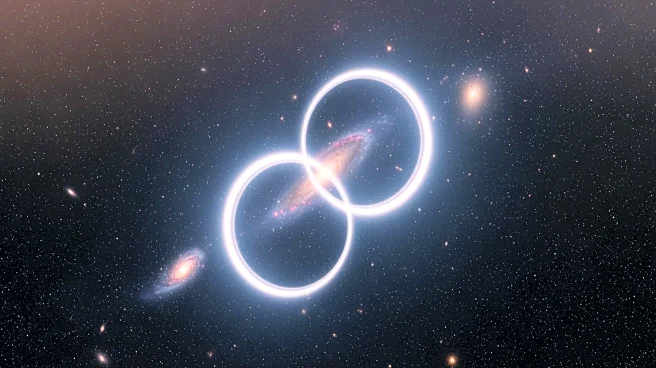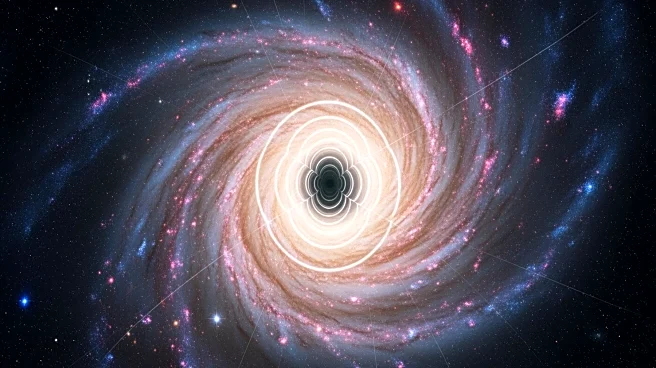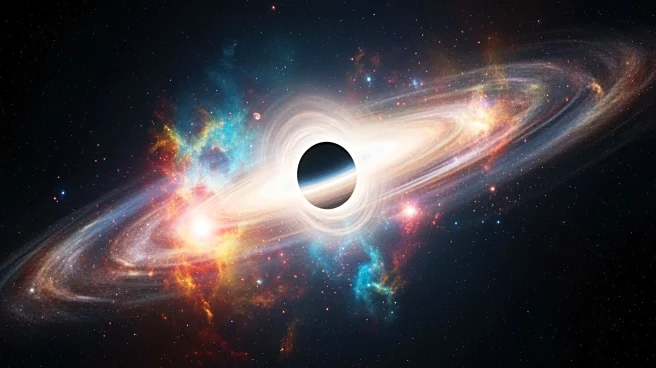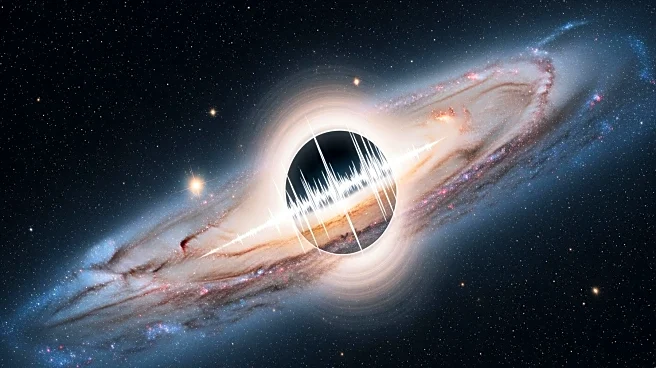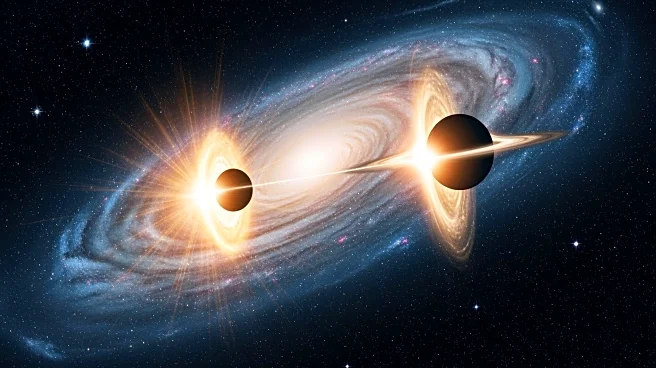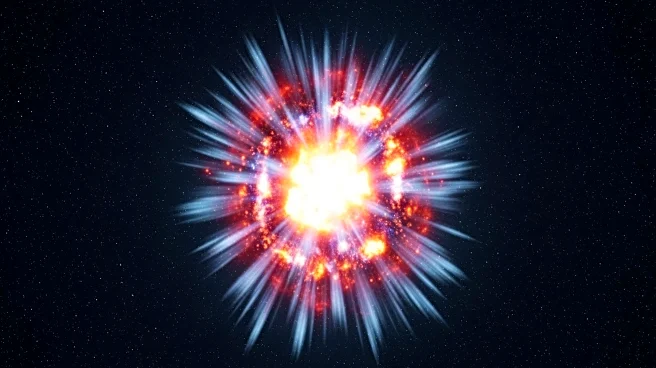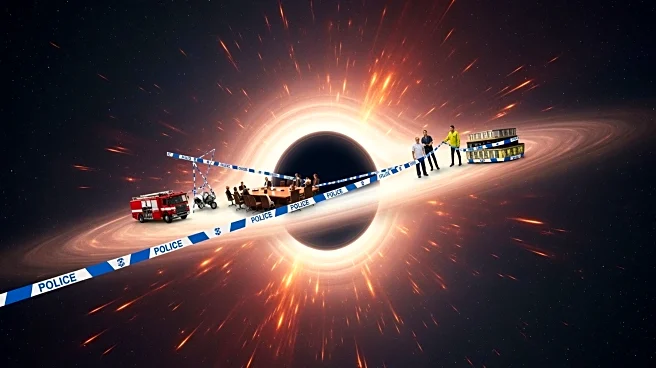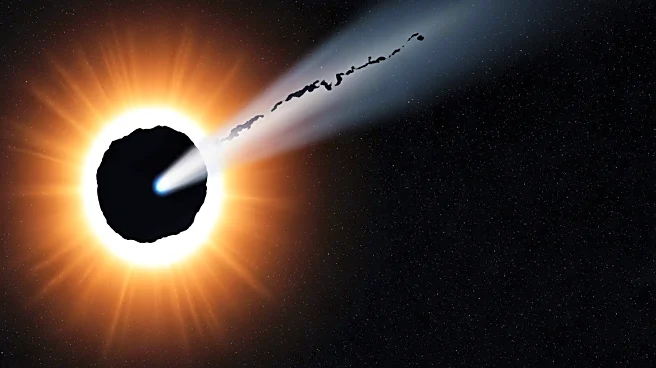What's Happening?
Astronomers have observed a tidal disruption event (TDE) where a star was destroyed by a massive black hole located 2,600 light years from the center of its host galaxy, a rare occurrence as most TDEs
happen at the galaxy's center. The event, designated AT 2024tvd, was first detected in 2024 by the Zwicky Transient Facility and monitored over 10 months, revealing two delayed radio flares. The black hole, believed to be of intermediate mass, may have been displaced due to a triple black hole interaction or a galaxy merger. This discovery challenges existing theories about black hole behavior and their typical locations within galaxies.
Why It's Important?
The discovery of a black hole causing a TDE outside the center of its galaxy is significant as it challenges the conventional understanding of black hole dynamics and their interactions with stars. This could lead to new insights into the behavior of intermediate mass black holes and their role in galaxy evolution. The findings may prompt further research into the mechanisms that allow black holes to exist outside their expected locations, potentially altering theories about galaxy formation and the distribution of black holes in the universe.
What's Next?
Researchers will continue to study the radio emissions and other data from the TDE to understand the delayed outflows and their implications. The event may inspire new observational strategies to detect similar occurrences, potentially leading to a broader understanding of black hole behavior. Future studies may focus on identifying other off-center TDEs and exploring the conditions that lead to such events, which could refine models of galaxy dynamics and black hole interactions.
Beyond the Headlines
The unusual location of the TDE raises questions about the gravitational interactions within galaxies and the potential for black holes to migrate from their original positions. This could have implications for understanding the gravitational forces at play in galaxy mergers and the distribution of mass within galaxies. The event also highlights the importance of continuous monitoring and advanced telescopic technology in uncovering rare cosmic phenomena.
